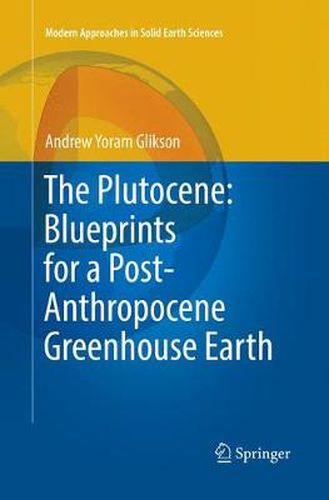Readings Newsletter
Become a Readings Member to make your shopping experience even easier.
Sign in or sign up for free!
You’re not far away from qualifying for FREE standard shipping within Australia
You’ve qualified for FREE standard shipping within Australia
The cart is loading…






This book presents projections and blueprints of the future geologic period, climate and biosphere, based on our current understanding of the Earth’s history and recent developments in the atmosphere-ocean-cryosphere system.
By the second decade of the 21st century it has become clear that, rather than channel its efforts into protecting its planetary biosphere and living species, Homo sapiens continues to sink its remaining resources into weapons, including nuclear missiles - thus increasing the risk of intentional or accidental spread of radioactive nuclides on land, oceans and atmosphere.
With time, possibility becomes probability, and probability becomes certainty - heralding a transition from the Anthropocene to a new geological period, named here as Plutocene after the element Plutonium. During the Plutocene the biosphere is dominated by elevated temperatures, analogous to the Pliocene (2.6 - 5.3 Ma ago) or the Miocene (5.3 - 23 Ma ago) when mean global temperatures were 2 to 4 degrees Celsius warmer and sea levels 20 to 40 meters higher than pre-industrial levels. High levels of radioactivity will persist for at least 20,000 years and acid oceans will severely limit biological activity to the hardiest species. Atmospheric CO2 higher than 500 ppm with residence time on the order of thousands of years will delay the subsequent glacial cycle.
These factors restrict comparisons of the Plutocene with biosphere conditions during the Miocene and Pliocene periods, partly because the flora and fauna evolved more gradually during these periods, unlike the abrupt climate shift of state during the second half of the 20th century and first part of the 21st century. Following a long lull in biological activity dominated by radiation-resistant organisms, especially Arthropods, a resumption of glacial cycles and decline in radioactivity will lead to the re-emergence of descendants of burrowing mammals and other genera. Depending on the intensity of radioactive pollution, hunter-gatherer humans may survive in northern latitudes, relatively cold high-altitude mountain valleys and elevated volcanic islands. In some areas subsistence farming may be possible. A new cycle will commence.
$9.00 standard shipping within Australia
FREE standard shipping within Australia for orders over $100.00
Express & International shipping calculated at checkout
This book presents projections and blueprints of the future geologic period, climate and biosphere, based on our current understanding of the Earth’s history and recent developments in the atmosphere-ocean-cryosphere system.
By the second decade of the 21st century it has become clear that, rather than channel its efforts into protecting its planetary biosphere and living species, Homo sapiens continues to sink its remaining resources into weapons, including nuclear missiles - thus increasing the risk of intentional or accidental spread of radioactive nuclides on land, oceans and atmosphere.
With time, possibility becomes probability, and probability becomes certainty - heralding a transition from the Anthropocene to a new geological period, named here as Plutocene after the element Plutonium. During the Plutocene the biosphere is dominated by elevated temperatures, analogous to the Pliocene (2.6 - 5.3 Ma ago) or the Miocene (5.3 - 23 Ma ago) when mean global temperatures were 2 to 4 degrees Celsius warmer and sea levels 20 to 40 meters higher than pre-industrial levels. High levels of radioactivity will persist for at least 20,000 years and acid oceans will severely limit biological activity to the hardiest species. Atmospheric CO2 higher than 500 ppm with residence time on the order of thousands of years will delay the subsequent glacial cycle.
These factors restrict comparisons of the Plutocene with biosphere conditions during the Miocene and Pliocene periods, partly because the flora and fauna evolved more gradually during these periods, unlike the abrupt climate shift of state during the second half of the 20th century and first part of the 21st century. Following a long lull in biological activity dominated by radiation-resistant organisms, especially Arthropods, a resumption of glacial cycles and decline in radioactivity will lead to the re-emergence of descendants of burrowing mammals and other genera. Depending on the intensity of radioactive pollution, hunter-gatherer humans may survive in northern latitudes, relatively cold high-altitude mountain valleys and elevated volcanic islands. In some areas subsistence farming may be possible. A new cycle will commence.